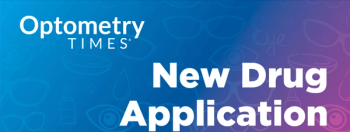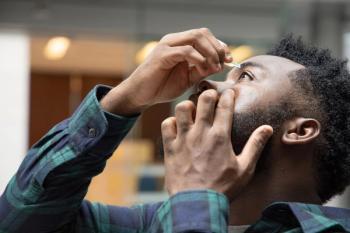
- November digital edition 2021
- Volume 13
- Issue 11
The many options of vision correction
Veteran optometrist has seen them all and is waiting for the next innovation
I often quip that most third-year students know more about contact lenses than I, a 27-year veteran optometrist. Thus, when I think of cooperative care or comanagement, my perspective is often skewed toward the surgical opportunities that may benefit our patients.
As of late, there is a tool that will bridge this contact lens, refraction–based mindset with the ophthalmological surgical like-minded optometrists. Have I piqued your interest?
Good, keep reading.
When I was a nouveau clinician and first started participating in clinical trials, I would often think of investigator-initiated trials (IITs) that would revolutionize the profession. Think of Steve Martin in The Jerk—great concept, poor design. In fact, Nerd Wax carries his idea to a new level. In my opinion, the Holy Grail of studies was and is the eradication of the biggest refractive scourge to all of humanity. I am not even being hyperbolic or provocative. I am speaking truth. What I speak of is presbyopia. Yes, the dreaded presbyopic shift that will and does affect every living person.
For decades, I have written about the natural selective properties of Darwinian evolution and this notion of survival of the fittest. The natural crystalline lens and the retina are exceptions to this rule. Perhaps you subscribe to the theory of intelligent design. Well, I have news for you: The crystalline lens is at the bottom of the class. Now may be a good time to take a break and ponder on this concept.
The eye, the most wondrous of organs, is backward (again, see retina) and has its most important component starts to diminish only 4 decades into the journey. Imagine a way around that. Something that is not surgical but is universally accepted and easy to use. Hello!
If I could have come up with my IIT and implemented it, I would be writing this from space because all billionaires have to go to space, for some reason, instead of fixing the woes of our planet. Much like most of my ideas, it turns out some other entity has either thought of it first or it is already available. And we are in a presbyopic awakening, so buckle up.
Surgically, the correction of presbyopia has been advanced by the new and newer IOLs. Lenses, such as the Alcon PanOptix and the Johnson & Johnson Symfony and Symfony Synergy, have elevated the clear lens extraction to a must-have for any patient over 50 years old. Much like pale is the new tan, lens extractions (cataract or clear lens) is the new LASIK. The Kamra corneal inlay is also an opportunity for patients utilizing pinhole technology. The nonsurgical options have been limited to refractive devices, such as contacts and exceptional progressive lenses.Shout out to Essilor for that Varilux X lens. It is amazingly clear.
I like wearing glasses, but what about all those patients who do not want to be tethered and do not want surgery? The time has finally arrived for the surgical and refractive to offer our patients an alternative. Very soon, we will have a drop to offer our patients relief from the presbyopic plague. Like any treatment, it is effective only if you use it. Thus, it is our opportunity to broadcast the science of presbyopic treatment.
The ophthalmic presbyopic drop landscape is rapidly expanding, with many companies looking to provide long-term near visual relief. Allergan is positioned to be the first out of the gates, hopefully within months, using a proprietary vehicle that provides a pH balance close to natural tears and pilocarpine 1.25%. This contracts the iris sphincter to an optimal size while activating the ciliary muscle for an increase in accommodation comfortably and safely.
In the double-masked clinical trials, the patients aged 40 to 55 years noted a clinical effect within 15 minutes, and over half of the patients felt the results lasted from 5 to 6 hours in 1 application and demonstrated significant near vision gains in mesopic conditions without loss of distance vision.
The Gemini trials showed very few adverse effects, and significant improvement was noted in the patient-reported outcomes, such as increase in near vision–related reading ability and reductions in the impact that presbyopia had on their daily life. This feels like 2006 all over again.
The time to start talking to patients about this presbyopic killer is yesterday. When a patient walks into your lane, they are looking (pun intended) for you to tell them something they don’t know. The opportunities to offer a drop that will sustain near vision for most of the day, and with a pinhole effect—we are talking near ranges beyond monovision. My postoperative LASIK patients are now turning 40, and my standard cataract patients are all hearing about the drop that will be soon available. Spread the word.
Articles in this issue
about 4 years ago
Avoid medical malpractice suitsabout 4 years ago
Optic disk swelling in an asymptomatic patient with diabetesabout 4 years ago
Taking a closer look at acquired blepharoptosisabout 4 years ago
Contact lens overwear leads to short-term, long-term consequencesabout 4 years ago
Optic Neuritis and COVID-19 vaccine connection?about 4 years ago
A guide to the latest presbyopia-correcting IOLsabout 4 years ago
Generic vs Branded: When RX makes a differenceNewsletter
Want more insights like this? Subscribe to Optometry Times and get clinical pearls and practice tips delivered straight to your inbox.


















































.png)


